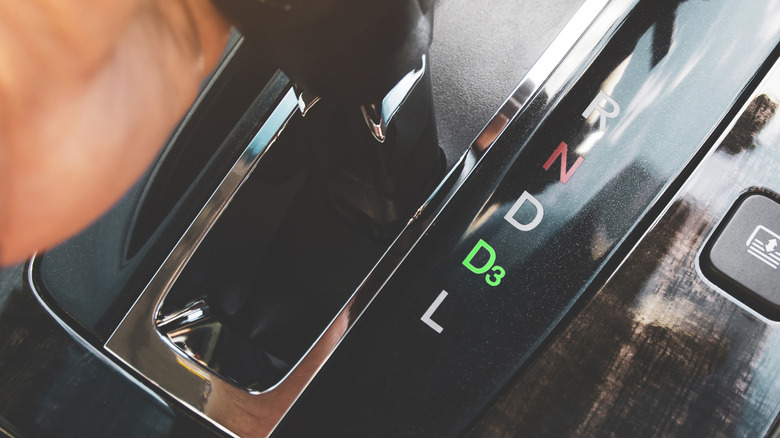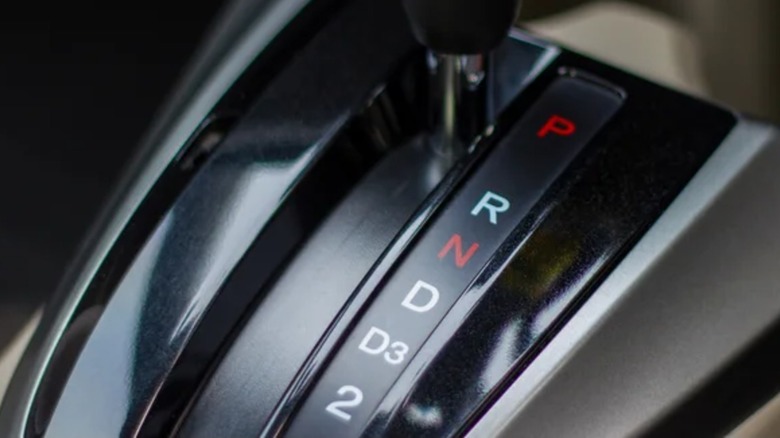What Does The 'D3' On Your Car's Gear Shift Mean? (And How Is It Different From D?)
There's a bit of mystery behind the operations of a car's transmission. Unlike the engine, which receives a lot of attention, a car's transmission can be confusing to novice drivers, particularly an automatic transmission. But make no mistake, knowing how an automatic transmission works is vital. It is central to several common car functions, including parking, reversing, and driving. You control the transmission with your gear shift.
The gear shift is surely a component you're familiar with. It is arranged and labeled according to the function of the different gears. But not all are made equal, as some automatic transmissions have more gears than others. For instance, you might find a D3 label absent on other cars you've been inside. Like every other gear shift symbol, that mysterious D3 serves a purpose, separate from that of the regular D or Drive gear, albeit related. To put it simply, D3 limits your car's drive function to the first three gears, whereas setting it on D won't bring about restriction. But there's more to it.
What the D3 gear shift means for you
Let's cut through the jargon. Given that both start with "Drive," D and D3 seem related. However, D has no upper gear limit. It'll shift through every available ratio depending on your speed, engine load, and driving conditions. In modern vehicles, that could mean six, eight, or even ten gears. It's a no-limits freeway party and acts as your default automatic mode.
Think of D3 as Drive's more disciplined sibling. It stakes its claim as a gear-limiter such that your ride only uses gears one through three. As it locks you into these limited options, functions such as overdrive will be ignored. Your transmission won't climb any higher even if you're pushing hard on the gas. In essence, D3 is Drive with boundaries, telling your transmission to stop and climb in shifts.
D3 is an important component. One of the things you might not know about the gears in an automatic car is that they are controlled by the transmission. As such, the control module handles gear shifting. When using only D, you risk overdrive, a function that can reduce engine RPMs at high speeds. As such, D3 acts as a check to limit your drive. But its usefulness is not restricted to this alone.
Why D3 matters and when to use it
So, why might anyone want to restrict their car's drive function? One reason is when it comes to engine braking, particularly when descending. Here, D3 transfers some of the braking responsibility to your engine. Picture going down a steep hill and your brakes stop working overtime. D3 can reduce wear on those pads by using internal engine resistance. Secondly, it's great for navigating stop-and-go traffic. In that instance, D3 gives you smoother acceleration and a touch more pep, saving you from uncomfortable jerky gear shuffling.
D3 is also great for driving uphill. It holds you in a lower gear that keeps torque high, preventing slipping or gasping for power. The same logic applies to driving in slippery conditions. Whether in rain or snow, automatic gear shifts can cause traction loss mid-shift. D3 limits gear changes, helping maintain stability in such conditions. For similar reasons, it's ideal for moderate towing.
With that said, there are scenarios where D3 should not be used. If you want smooth, fuel-efficient cruising on a highway, D3 will keep RPMs high, meaning you'll burn more fuel with less speed. Another instance is when heavy towing at high speeds, as D3 can raise transmission temperatures in sustained high-load towing, leading to overheating. Stick to D and let the gearbox manage a higher gear.


